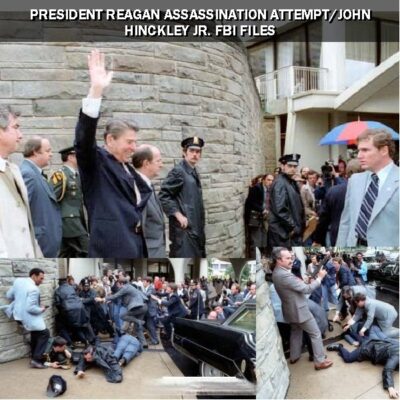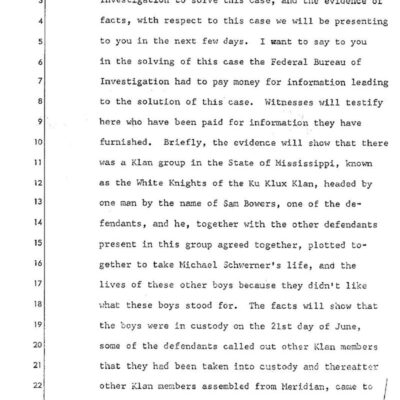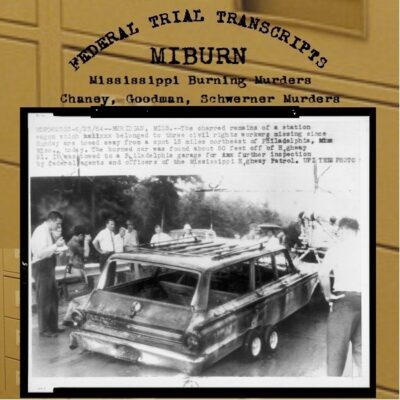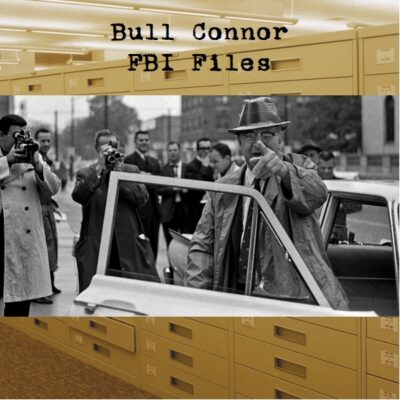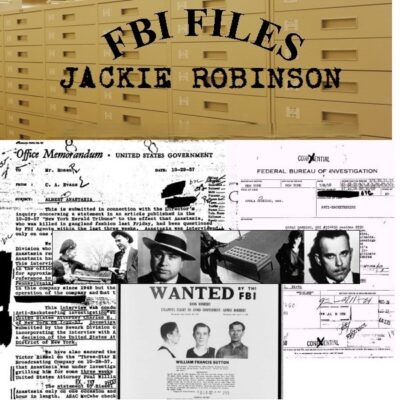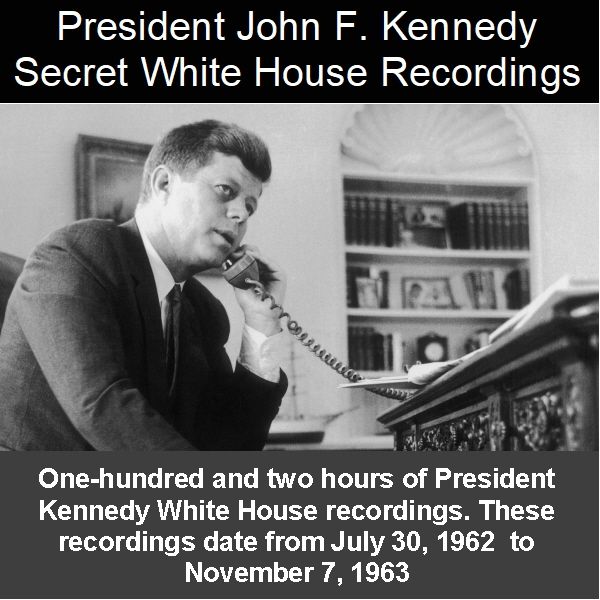
Description
JFK’s Secret White House Recordings: Timeline and Key Figures
Timeline of Main Events
- Before July 30, 1962: Robert Bouck, a Secret Service agent, designs, acquires, and installs a system to secretly record meetings in the Oval Office and Cabinet Room. Microphones are placed in the President’s desk and Cabinet table area, with recording equipment located in the White House basement.
- Likely Early September 1962: A separate system for secretly recording telephone conversations is installed, likely by the telephone company. This system uses Dictaphone equipment and is connected to the shared telephone line of President Kennedy and his secretary, Evelyn Lincoln.
- July 30, 1962: The earliest dated recording in the collection of President Kennedy’s secret White House recordings. These are meeting recordings.
- September 10, 1962: The earliest dated recording of a telephone conversation in the collection.
- October 22, 1962: A meeting during the Cuban Missile Crisis where President Kennedy stresses the need to inform nuclear missile sites in Turkey not to fire if under Soviet attack, the importance of Allied commitments on Berlin, maintaining U.S. credibility, and the strategic balance.
- April 19-22, 1963: President Kennedy meets with his staff to discuss the military situation in Southeast Asia and potential U.S. responses, including military movements into Thailand and the Gulf of Tonkin as a signal to Hanoi and Moscow regarding Laos. Discussions include the potential impact of bombing Hanoi.
- April 22, 1963: An informal meeting between President Kennedy and UN Ambassador Adlai Stevenson to discuss foreign policy issues, including Cuba as a likely Republican campaign issue in 1964, as highlighted by Richard Nixon. Kennedy expresses his view of Nixon’s rhetoric.
- April 26, 1963: President Kennedy meets with outgoing U.S. Ambassador to Germany Walter C. Dowling to discuss his upcoming trip to Germany and potential comparisons to Charles DeGaulle’s recent visit. Kennedy expresses concern about the perception of his trip.
- April 27, 1963: A meeting on the Middle East focusing on a potential coup in Jordan and the reactions of the United Arab Republic (UAR) and Israel. Kennedy expresses concern about rapid escalation and emphasizes that U.S. interest is not solely about Israel but the future stability of the entire region. Henry Kissinger’s recent article on the Multilateral Force is mentioned.
- Second Week of November 1963: One of the last recordings made by President Kennedy, in which he dictates notes likely for his memoirs.
- November 22, 1963: Immediately after learning of President Kennedy’s assassination, Secret Service agent Robert Bouck dismantles the tape-recording system for meetings.
- November 23, 1963: Evelyn Lincoln moves the President’s Office Files, including the telephone recordings system, to the Executive Office Building.
- November 24, 1963: Evelyn Lincoln moves the President’s Office Files, including the recordings, from the West Wing of the White House to the Executive Office Building.
- 1964: Evelyn Lincoln takes the recordings with her when she begins working at the National Archives.
- 1965: Evelyn Lincoln states she “turned everything over to the archives” when she left her employment at the National Archives. The recordings are moved to the Federal Archives and Records Center in Waltham, Massachusetts, the temporary home of the Kennedy Library.
- 1963 – 1975: National Archives personnel do not have the combination to the cabinet where the recordings are stored.
- Sometime Before 1975: Robert Kennedy apparently removes all the Dictabelt (telephone) recordings.
- 1973: The existence of the secret recordings is announced, apparently surprising many close staff members like Theodore Sorensen, McGeorge Bundy, Larry O’Brien, Pierre Salinger, and Walter Heller. The Dictabelt recordings removed by Robert Kennedy are restored to the collection container in Waltham.
- June 1983: The first items from the presidential recordings are opened to public research.
- 1998: After the death of Evelyn Lincoln, additional hours of telephone recordings are received by the Library.
- 1999: Presidential recording number 19, previously deemed missing, is discovered in the papers of NSC staffer Robert Komer.
- August 2004: More recent releases of JFK Meetings recordings are made available to the public, including discussions on Middle East crises, Vietnam, and the 1964 election scene (with commentary on Nixon and Kissinger).
- Over the past 21 years (prior to the source’s date): The Library staff has reviewed and opened all of the telephone conversations and a large portion of the meeting tapes.
Cast of Characters and Brief Bios:
- John F. Kennedy: 35th President of the United States (1961-1963). The source details his secret recording of meetings and phone conversations from July 1962 until his death. Topics discussed range from the Cuban Missile Crisis and Vietnam to domestic politics and foreign relations.
- Robert F. Kennedy: Attorney General of the United States during his brother’s presidency. He is mentioned as being heard on the recordings and as having removed the Dictabelt recordings at some point after his brother’s death.
- Lyndon B. Johnson: Vice-President under John F. Kennedy. He is mentioned as being among the individuals heard on the recordings. He would become President after Kennedy’s assassination.
- Robert McNamara: Secretary of Defense under President Kennedy. He is listed as one of the individuals whose voice is on the recordings, likely involved in discussions on military matters like Vietnam and the Cuban Missile Crisis.
- Dean Rusk: Secretary of State under President Kennedy. He is mentioned as being heard on the recordings, likely participating in discussions on foreign policy issues such as the Cuban Missile Crisis, Vietnam, and the Middle East.
- John McCone: Director of the Central Intelligence Agency (CIA) during a portion of Kennedy’s presidency. He is listed as being heard on the recordings, likely involved in discussions on intelligence matters, including Cuba and Vietnam.
- General Maxwell Taylor: Chairman of the Joint Chiefs of Staff during President Kennedy’s administration. He is mentioned as being heard on the recordings, particularly in discussions regarding military actions and strategy in Southeast Asia and during the Cuban Missile Crisis.
- McGeorge Bundy: Special Assistant to the President for National Security Affairs. He is listed as being among those heard on the recordings, playing a key role in advising Kennedy on foreign policy and national security matters. He was reportedly surprised by the existence of the recordings.
- George Ball: Undersecretary of State during President Kennedy’s administration. He is mentioned as being heard on the recordings, likely involved in foreign policy discussions.
- Lt. General James H. Doolittle: A prominent military figure. His presence on the recordings suggests discussions involving military strategy or assessments.
- Adlai Stevenson: United States Ambassador to the United Nations under Presidents Kennedy and Johnson. He is featured in the source discussing foreign policy issues, particularly Cuba and concerns about U.S. commitment in Southeast Asia, in a meeting with President Kennedy.
- General Curtis LeMay: Chief of Staff of the Air Force during President Kennedy’s administration. His presence on the recordings indicates discussions involving air power and military strategy, potentially related to Vietnam or the Cuban Missile Crisis.
- Evelyn Lincoln: President Kennedy’s personal secretary. She was aware of the recording systems, actively involved in the telephone recording process, and the custodian of the tapes and Dictabelts. Her recollections are a key source of information about the recordings’ origin and purpose.
- Theodore Sorensen: Special Counsel and advisor to President Kennedy. He was reportedly unaware of the secret recordings until their existence was revealed.
- Edward R. Murrow: Prominent journalist and Director of the U.S. Information Agency under President Kennedy. His presence on the recordings suggests discussions related to public opinion, media, or international communication.
- Clark Clifford: A prominent Washington lawyer and advisor to several presidents. His inclusion suggests discussions on legal or political matters.
- Arthur Schlesinger: A historian and Special Assistant to President Kennedy. His presence on the recordings likely indicates discussions on historical context, policy, or speechwriting.
- Admiral George W. Anderson: Chief of Naval Operations during the Cuban Missile Crisis. His voice on the recordings would likely be related to naval deployments and strategies during that period.
- Henry H. Fowler: Under Secretary of the Treasury during President Kennedy’s administration. His presence on the recordings suggests discussions on economic or financial matters.
- Roger Hillsman: Director of the State Department Bureau of Intelligence and Research. His inclusion indicates discussions involving intelligence assessments and foreign affairs analysis.
- Senator Everett M. Dirksen: Republican Senator from Illinois and Senate Minority Leader. His presence on the recordings likely involves discussions on legislative matters or political strategy.
- Senator J. William Fulbright: Democratic Senator from Arkansas and Chairman of the Senate Foreign Relations Committee. His inclusion suggests discussions on foreign policy issues.
- Senator Hubert Humphrey: Democratic Senator from Minnesota and future Vice-President. His presence likely relates to discussions on legislative matters or political strategy.
- Senator Richard Russell: Democratic Senator from Georgia and a powerful figure in the Senate. His inclusion likely involves discussions on legislative matters, potentially including defense or foreign policy.
- Secretary of Treasury Douglas Dillon: Secretary of the Treasury under President Kennedy. His presence on the recordings indicates discussions on economic and financial policy.
- Chairman Federal Reserve System Board of Governors William Martin: Head of the Federal Reserve. His inclusion suggests discussions on monetary policy and the economy.
- Richard Helms: A high-ranking official in the CIA, who would later become Director. His presence on the recordings likely involves discussions on intelligence matters.
- General Douglas MacArthur: A highly decorated and influential General, retired by this period. His presence on the recordings suggests discussions drawing on his extensive military and historical experience.
- Dwight D. Eisenhower: 34th President of the United States. His inclusion on the recordings likely involves discussions where Kennedy sought his advice or perspective on significant issues.
- Walter C. Dowling: Outgoing U.S. Ambassador to Germany. He is mentioned in a meeting with President Kennedy discussing the President’s upcoming trip to Germany.
- Charles DeGaulle: President of France. His recent trip to Germany is mentioned as a point of comparison for Kennedy’s planned visit.
- Richard Nixon: Former Vice-President and a prominent Republican figure. He is mentioned in discussions about the upcoming 1964 election and Republican strategies, particularly concerning Cuba.
- Henry Kissinger: A prominent academic and later a key foreign policy advisor. His recent article on the Multilateral Force is mentioned in a meeting.
- Nelson Rockefeller: Republican Governor of New York, considered a potential candidate for the 1964 presidential election. Kissinger’s article is speculated to be related to his ambitions.
- Norman Cousins: Writer and editor. He is mentioned as having a meeting with President Kennedy where Nixon is discussed.
- Robert Bouck: A U.S. Secret Service agent who designed, acquired, and installed the system for recording meetings. He provided key information about the technical aspects and his understanding of the system’s purpose. He dismantled the system after Kennedy’s assassination.
- Chester Miller: An assistant to Robert Bouck, who helped monitor the recording equipment and change tapes. He also provided information about the operation of the meeting recording system.
- Robert Komer: NSC staffer in whose papers a missing presidential recording was later discovered.
- Larry O’Brien: Special Assistant to the President for Congressional Relations. He was reportedly surprised by the existence of the recordings.
- Pierre Salinger: White House Press Secretary. He was reportedly unaware of the secret recordings.
- Walter Heller: Chairman of the Council of Economic Advisers. He was reportedly taken by surprise by the revelation of the recordings.
President John F. Kennedy Secret White House Recordings
One-hundred and two hours of President Kennedy White House recordings. These recordings date from July 30, 1962 to November 7, 1963.
John F. Kennedy was the first president to extensively record his meetings and telephone conversations. The recordings consists of Meeting Recordings, mainly of meetings in the Cabinet Room and Oval Office, and Dictabelts, mainly of telephone conversations. The first items from the presidential recordings were opened to public research in June of 1983. Over the past 21 years, the Library staff has reviewed and opened all of the telephone conversations and a large portion of the meeting tapes. The latter are predominantly meetings with President Kennedy in either the Oval Office or the Cabinet Room.. The tapes represent raw historical material.
Among the many individuals heard on the recordings are President John F. Kennedy, Attorney General Robert F. Kennedy, Vice-President Lyndon Johnson, Secretary of Defense Robert McNamara, Secretary of State Dean Rusk, Director of CIA John McCone, Chairman Joint Chiefs of Staff General Maxwell Taylor, Special Assistant to the President for National Security Affairs McGeorge Bundy, Undersecretary of State George Ball, Lt. General James H. Doolittle, Adlai Stevenson, General Curtis LeMay, Evelyn Lincoln, Theodore Sorensen, Edward R. Murrow, Clark Clifford, Arthur Schlesinger, Admiral George W. Anderson, Under Secretary of the Treasury Henry H. Fowler, Director State Department Bureau of Intelligence and Research Roger Hillsman, Senator Everett M. Dirksen, Senator J. William Fulbright, Senator Hubert Humphrey, Senator Richard Russell, Secretary of Treasury Douglas Dillon, Chairman Federal Reserve System Board of Governors William Martin, Richard Helms, General Douglas MacArthur and Dwight D. Eisenhower.
The many topics discussed include: The Cuban Missile Crisis; Vietnam hamlet program; Military coup in Vietnam; Deaths of Diem and Nhu in Vietnam, University of Mississippi integration crisis; Discussion of what to include in Ambassador Adlai Stevenson’s presentation to the United Nations confronting The Soviet Union on missiles in Cuba; Consideration of civil defense measures during the Cuban Missile Crisis; Latin American politics and economy; Coup in Peru; Nuclear Test Ban Treaty; Soviet disarmament agreements and inspections; Tax cuts; Interest rates; Laotian military expenditures; Use of napalm in Vietnam; Possible United States action against Cuba; Bay of Pigs; Khrushchev’s actions; Berlin invasion contingency planning.
Some of the material in this set was not made available to the public until August 2004. More recent releases of JFK Meetings recordings include Discussions on Middle East crises, Vietnam and the 1964 election scene including commentary by the President on Nixon and Kissinger
Historians have often debated and will continue to debate what steps President Kennedy would have taken in Vietnam. On one of the tapes, President Kennedy listens to recommendations by the Joint Chiefs of Staff, and later that same day, has an informal meeting with U.N. Ambassador Adlai Stevenson during which Stevenson expresses concern that any moves in Southeast Asia might signal a further commitment by the U.S. About the situation, the President says: “When we came in we were at the point of having to go in and fight. At least we are not going to do that.”
Highlights include:
On 4/19/63, 4/20/63, and 4/22/63, President Kennedy met with his staff to discuss the present military situation in Southeast Asia and the diplomatic and military moves that the United States will make in response. As a chess-move directed at Hanoi and Moscow to indicate how seriously the U.S. is taking the situation in Laos, the U.S. military is moving forces into Thailand, a carrier and destroyers into the Gulf of Tonkin. The Joint Chiefs of Staff discuss depositing a sunken ship across Hanoi harbor to disrupt shipping or destroy rail lines. The President asks that if the carrier is moved into the Gulf: “What kind of threat would it be to Hanoi?” Later he states: “It seems to me we ought to have a study made of exactly what we could do that would really have an effect. I am not sure that bombing even Hanoi would do much compared to the risk that it would entail.” This discussion occurs seven months before President Kennedy’s death and sixteen months before President Lyndon B. Johnson would ask Congress to pass the Gulf of Tonkin Resolution.
On 4/26/63, President Kennedy meets with outgoing U.S. Ambassador to Germany Walter C. Dowling to discuss Germany. The President asks for Dowling’s opinion on the President’s upcoming trip to Germany and the possible comparison to French President Charles DeGaulle’s recent trip to Germany. Today, 41 years later, we know that President Kennedy’s June 1963 trip to Berlin was an enormous success. He made his stirring, symbolic “Ich bin ein Berliner” statement to a huge, triumphant crowd at the Rudolph Wilde Platz in Berlin. The Rudolph Wilde Platz would later be renamed John F. Kennedy Platz. However, the tapes reveal Kennedy’s concern prior to the trip about how his trip to Germany would be viewed in comparison to General DeGaulle’s earlier, celebrated German tour. The President states: “I don’t want to look like I am doing a tour of Germany like De Gaulle. On the other hand, I think any place we go it would be worth it if there’s going to be a reasonable response.” Ambassador Dowling responds by telling the President: “My money’s on you Mr. President.” To which, Kennedy, in uncharacteristic uncertainty, says: “We’ll see, we’ll see, we’ll see. It’s hard of course, he spoke German and he had that Franco-German business. But I think we can do it as long as we don’t get into a business where we seem to be comparing if we keep the press off it.”
In a 4/27/63 meeting on the Middle East examines the situation in Jordan involving a possible coup and the reactions of the United Arab Republic (UAR) and Israel. President Kennedy is very concerned that the situation in the Middle East could escalate quickly. One of the President’s advisors says to him: “Our real problem today in the Near East is that neither Israel nor the Arabs have any kind of plan to get themselves out of the box of active hostility.” The White House is aware that certain moves by the United States may be interpreted by Middle East nations as being too pro-Israeli. President Kennedy says: “Our interest is not solely a concern of Israel but really a concern for their [all of the Middle East] future that there’s going to be a 90-day war and we assume that they [all of the Middle East] don’t really want that, we want it to be understood in advance that it’s not just because of our concern about Israel. Our concern is mutual because the peril is mutual.”
The subject of a Kennedy 1964 re-election campaign, which never took place, can be heard on the recordings. In these recordings, informal discussions provide listeners with the opportunity to hear President Kennedy discuss issues in a personal and relaxed setting, the sounds of the President’s rocking chair rocking can be heard in the background. Adlai Stevenson, Ambassador to the U.N., and the President have an informal meeting on 4/22/63 to discuss numerous foreign policy issues, including Cuba as the leading 1964 campaign issue for the Republicans, highlighted in recent speeches by Richard Nixon. Nixon is also mentioned in the President’s meeting with writer and editor Norman Cousins. In the meeting with Adlai Stevenson, the President refers to a recent Richard Nixon speech as “pure Nixon, he just runs so true to form that he really ought to be preserved.” When Ambassador Stevenson asks whether Nixon is really a menace politically, the President responds: “No, he’s no menace. But the lies. Cuba is obviously the issue.” During the meeting with outgoing U.S. Ambassador to Germany Walter C. Dowling on 4/26/63, the President mentions Henry Kissinger’s recent article in The Reporter on the Multilateral Force, commenting, “I think he’s doing this stuff for Rockefeller.” Nelson Rockefeller was considered to be a likely 1964 Republican candidate for president.
In a 10/22/62 meeting during the Cuban Missile President Kennedy during with the Joint Chiefs of Staff, Kennedy stresses the need to inform nuclear missile sites in Turkey not to fire if they come under a Soviet attack. Kennedy Discuses making it clear to allies that commitments on Berlin would not be compromised, the need to protect U.S. credibility and the need to maintain the strategic balance.
In one of the last recording made by President Kennedy in the second week of November 1963., Kennedy give a dictation to be used for his memoirs.
The National Archives holds 6 hours of tapes made during Kennedy’s time in the Senate and approximately 275 hours of recording made during his presidency. In 1975 archivists received the combination of a safe containing most of the presidential recordings. In 1998, after the death of the President’s longtime secretary, Evelyn Lincoln, the Library received additional hours of telephone recordings. And in 1999, in the papers of NSC staffer Robert Komer, the Library discovered presidential recording number 19, which since 1975 had been deemed missing. In all the Kennedy collections consist of 125 tapes of office meetings.
Neither John F. Kennedy nor his brother Robert F. Kennedy left behind any documents or recorded comments on the reasons for these recordings. There is no evidence of receipts, memoranda, letters, notes or other documents contemporary to the Kennedy administration that deal with the recordings systems and their installation. The circle of those who knew of the recordings was limited to President Kennedy’s personal secretary Evelyn Lincoln and the two Secret Service men who operated the tape-recording system. Such close staff members as Theodore Sorensen, McGeorge Bundy, Larry O’Brien, Pierre Salinger, and Walter Heller appeared to have been taken completely by surprise when the existence of the recordings was announced in 1973.
It is from Kennedy’s personal secretary, Evelyn Lincoln, and from two U.S. Secret Service men, Robert Bouck and Chester Miller, that all our information on origin and purpose must be drawn, based entirely on their own memories. Bouck installed the audiotape system to record meetings in the Oval Office and the Cabinet Room. His assistant, Miller, helped him to monitor the operation of the equipment and to change reels of tape as needed. Evelyn Lincoln actively participated in the manual activation of at least the telephone recordings system, and she was the custodian of all tapes and Dictabelts that bad been recorded upon. Evelyn Lincoln has asserted that the recordings were intended solely for use in writing the Kennedy memoirs when he should leave office, and that he neither listened to any of them himself nor had any transcripts prepared. Bouck and Miller were not told why the systems were installed, but Bouck had an impression that it had something to do with critical discussions about the Soviet Union.
The earliest event on any of the audiotapes of meetings in the collection is dated July 30, 1962. President Kennedy was vacationing on Cape Cod for all four of the weekends preceding that date, and installation could have taken place on any of them. Robert Bouck, who designed, acquired, and installed the system, has the impression that it was much earlier, but there are no recordings in the collection that can be dated any earlier than July 30, 1962.
Bouck, whose normal duty was to protect the White House against electronic eavesdropping from outside, installed microphones in the kneehole of the president’s desk in the Oval Office and in unused light fixtures on the wall behind the president’s chair in the Cabinet Room. The recording equipment was in the basement of the West Wing, connected to the microphones by wires passed through the floor. The president turned the system on and off by switches located in the kneehole of the desk and at his place at the Cabinet table. At some point, a third switch was installed on the coffee table by the fireplace in the Oval Office. Mrs. Lincoln believes that the system operated like the telephone system, and that she had a switch, but Bouck does not remember installing one for her.
In the early months of the system, Bouck or Miller would check the recording equipment daily and would change reels of tape as they showed signs of use. Later they installed a tandem system whereby a second machine and second reel would automatically begin to record as the first reel ran out of tape. When this happened, a light would signal in their office in the Executive Office Building that would alert them that a reel needed to be changed. Tapes that were completed were given to Mrs. Lincoln, who made notations as to date and event and placed the reels in the same cabinet in which she kept the Dictabelts.
Bouck personally dismantled the tape-recording system on November 22, 1963, immediately after learning of President Kennedy’s death.
The exact date of installation and initial operation of the system for recording telephone conversations is uncertain, but it was probably in early September 1962. Mrs. Lincoln recalls that it occurred on a weekend when Kennedy was in Newport, Rhode Island, and he was vacationing there on the weekends of August 25-26, September 1-2, and September 8-9 in 1962. The earliest recording of a telephone conversation on the Dictabelts is September 10, 1962, and there are no belts of conversations of any earlier date. The system itself was a common, commercially available Dictaphone system using red, plastic sleeves. It was installed, according to Evelyn Lincoln, by the telephone company, and neither Miller nor Bouck were involved in the installation. The recording device and belts were located in a cabinet near Evelyn Lincoln’s desk, and it was connected by wires to the common telephone line shared by her desk phone and the phone on the president’s desk in the Oval Office.
Mrs. Lincoln activated the recording device upon receiving a light signal from the president, who initiated the signal by pressing a switch on his desk. As each Dictabelt was recorded, Mrs. Lincoln would remove it and note the date and participants in the conversations recorded on it. She placed the used belts in a combination-lock cabinet in a small room just off the Oval Office. The system apparently was left in place when Mrs. Lincoln moved to the Executive Office Building on November 23, 1963.
Mrs. Lincoln took the recordings with her to the Executive Office Building when she moved the President’s Office Files from the West Wing of the White House on November 24, 1963. They went with her again when she went to work at the National Archives in 1964. She states that when she left the employ of the National Archives in 1965 she “turned everything over to the archives,” including the recordings.
The recordings appear to have been moved from the National Archives in Washington to the security vault of the Federal Archives and Records Center in Waltham, Massachusetts, the temporary home of the Kennedy Library from 1965 to 1979, in the fall of 1965. At no time during the period 1963 to 1975 did personnel of the National Archives have the combination to the cabinet in which the recordings were stored. At some point prior to the removal of the recordings to Waltham, Robert Kennedy apparently removed from them all the Dictabelt recordings, which were not restored to the collection container in Waltham until July of 1973.
Source: National Archive and Records Administration


